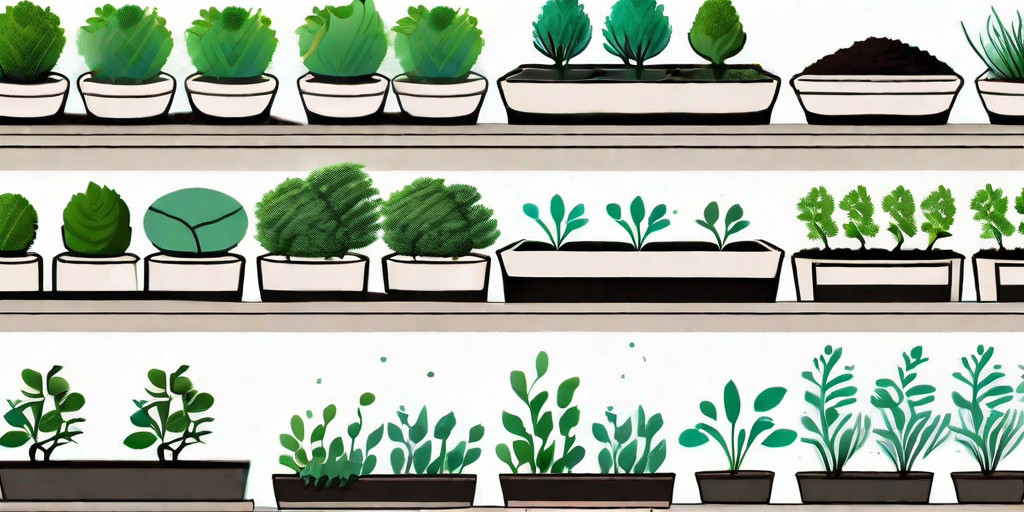
Welcome, green thumb enthusiasts, to the exciting world of boxwood cultivation! Boxwood plants, known for their lush greenery and versatility, are a favorite among gardeners worldwide. Whether you're a seasoned horticulturist or a budding plant parent, this guide will help you navigate the ins and outs of growing your own boxwood babies, right from the comfort of your home. So, let's dive in and get our hands dirty, shall we?
Understanding the Boxwood Plant
Before we delve into the nitty-gritty of boxwood cultivation, let's take a moment to appreciate the beauty and versatility of this plant. The boxwood, or Buxus, is a genus of evergreen shrubs and trees known for their dense foliage and resistance to pests. They're like the superheroes of the plant world, only greener and quieter.
Boxwood plants are native to western and southern Europe, southwest Asia, and northern Africa. But don't let that fool you into thinking they're exclusive jet-setters. These plants are quite adaptable and can thrive in a variety of climates, making them a popular choice for gardens around the world.
The Many Faces of Boxwood
One of the most fascinating aspects of boxwood plants is their diversity. There are about 70 species of boxwood, each with its unique characteristics. Some are small and compact, perfect for container gardening or bonsai. Others can grow into large trees, providing shade and privacy in your garden.
And let's not forget about the different shapes and forms that boxwood plants can take. From spherical shrubs to intricate topiaries, the possibilities are endless. It's like having your very own green sculpture garden!
Getting Started with Boxwood Cultivation
Now that we've covered the basics of boxwood plants, it's time to roll up our sleeves and get to work. Growing your own boxwood plants can be a rewarding experience, but it requires patience, care, and a bit of know-how. But don't worry, we've got you covered.
Whether you're starting from seeds, cuttings, or young plants, this step-by-step guide will walk you through the process of boxwood cultivation. So, grab your gardening gloves and let's get started!
Step 1: Choosing Your Boxwood
First things first, you need to choose the right boxwood for your garden. Consider factors like size, shape, and climate tolerance. Do you want a small, compact shrub for your patio? Or a large, towering tree for your backyard? The choice is yours, but choose wisely!
Also, keep in mind that different boxwood species have different care requirements. Some prefer full sun, while others thrive in partial shade. Some need well-drained soil, while others can tolerate wet conditions. Make sure to choose a boxwood that suits your garden's conditions and your gardening skills.
Step 2: Planting Your Boxwood
Once you've chosen your boxwood, it's time to plant it. Boxwood plants prefer well-drained soil with a pH between 6.5 and 7.5. They also need a sunny or partially shaded spot in your garden.
When planting your boxwood, dig a hole twice as wide and as deep as the root ball. Place the plant in the hole, making sure the top of the root ball is level with the soil surface. Backfill the hole with soil, firming it gently around the root ball. Water thoroughly after planting.
Step 3: Caring for Your Boxwood
Now that your boxwood is planted, it's time to take care of it. Boxwood plants need regular watering, especially during dry periods. They also benefit from a layer of mulch to retain moisture and control weeds.
Pruning is another important aspect of boxwood care. Regular pruning helps maintain the shape of your boxwood and promotes dense, healthy growth. Just remember to prune in late winter or early spring, before the new growth starts.
Frequently Asked Questions
How often should I water my boxwood?
Boxwood plants need regular watering, especially during dry periods. However, they don't like waterlogged soil, so make sure your garden has good drainage. A good rule of thumb is to water your boxwood when the top inch of soil is dry.
Can I grow boxwood in a container?
Absolutely! Boxwood plants are perfect for container gardening. Just make sure to choose a container with good drainage and use a high-quality potting mix. Also, keep in mind that container-grown boxwoods may need more frequent watering than those grown in the ground.
What pests and diseases affect boxwood?
Boxwood plants are generally resistant to pests and diseases. However, they can be affected by boxwood blight, a fungal disease that causes leaf drop and dieback. Pests like boxwood leafminer and boxwood mite can also cause damage. Regular inspection and prompt treatment can help keep your boxwood healthy.
Conclusion
And there you have it, folks! A comprehensive guide to growing your own boxwood plants. With patience, care, and a bit of green thumb magic, you can cultivate lush, beautiful boxwoods right in your backyard. So, what are you waiting for? Get out there and start growing!
Remember, the journey of a thousand miles begins with a single step... or in this case, a single boxwood seedling. Happy gardening!















